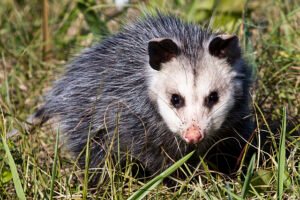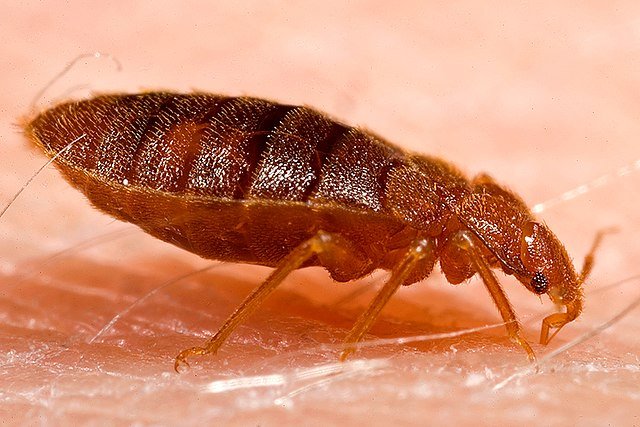Opossums (Didelphis virginiana): The Misunderstood Night Wanderers
 Opossums (Didelphis virginiana), also known as Virginia opossums, are the only marsupials found in North America. Recognized by their rat-like tails, sharp teeth, and habit of "playing dead," these creatures have long carried a mixed reputation. Some people see them as pests, while others view them as valuable urban scavengers that clean up waste and help control insect and rodent populations.
Opossums (Didelphis virginiana), also known as Virginia opossums, are the only marsupials found in North America. Recognized by their rat-like tails, sharp teeth, and habit of "playing dead," these creatures have long carried a mixed reputation. Some people see them as pests, while others view them as valuable urban scavengers that clean up waste and help control insect and rodent populations.
Understanding opossums means going beyond stereotypes. They are highly adaptable, nocturnal animals that thrive in rural, suburban, and urban environments. While their presence can cause property issues and occasional health concerns, they also serve ecological roles often overlooked.
Identification
Scientific name: Didelphis virginiana
Common name: Virginia opossum
Size: Adults typically weigh 4–6 kg (9–13 lbs) and measure 60–100 cm (2–3 ft) including the tail.
Appearance: White face with pointed snout, dark gray to black fur, and a long hairless prehensile tail. Their feet have opposable thumbs on the hind legs, aiding in climbing.
Unique features:
Marsupial pouch in females.
50 sharp teeth, more than any other North American mammal.
Characteristic hissing and drooling when threatened.
Biology and Ecology
Opossums are nocturnal omnivores with diverse diets. They eat:
Insects (including Fruit flies (Drosophila spp.), beetles, and crickets).
Small vertebrates (frogs, mice, snakes).
Fruits, vegetables, and grains.
Carrion, making them scavengers similar to Blow flies (Calliphoridae) in ecological function.
Reproduction
Breeding season: January–July.
Females can have up to three litters per year, with 5–13 young each.
Pouch development: Newborns, the size of honeybees, crawl into the mother’s pouch where they continue to develop for ~2 months.
Behavior
Solitary, except during mating or when mothers care for young.
Excellent climbers and swimmers.
Known for “playing possum”—a defensive behavior involving feigned death.
Global Distribution
Native range: Eastern United States and Central America.
Current spread: Found throughout most of North America, from southern Canada to Costa Rica.
Urban adaptation: Especially common in suburban and city environments where food waste, pet food, and shelter opportunities are abundant.
Risks and Damage
Property Damage
Can raid garbage bins, compost piles, and pet food bowls.
Nest under porches, sheds, or attics, causing insulation damage.
Digging in gardens and lawns in search of grubs and insects.
Health Risks
Vectors of parasites such as fleas, ticks, and mites.
Possible carriers of diseases like leptospirosis, tuberculosis, and spotted fever.
Rabies risk is lower than in raccoons or skunks, but still possible.
Impact on Pets and Poultry
May eat eggs and young poultry if given access.
Can fight with domestic pets when cornered.
Signs of Infestation
Nocturnal activity: Noises at night in attics, sheds, or under decks.
Tracks: Hand-like prints with opposable thumbs on hind feet.
Droppings: Resemble small dog feces, often in clusters.
Odor: Musky smell when nesting indoors.
Pet disturbance: Dogs barking at night, especially near trash bins.
Control Methods
Sanitation
Keep garbage in sealed containers.
Remove fallen fruit and secure compost piles.
Do not leave pet food outdoors overnight.
Exclusion
Seal entry points under porches and sheds with wire mesh.
Close attic vents and gaps with durable screening.
Trim branches near rooftops to reduce access.
Repellents
Ammonia-soaked rags and predator urine products sometimes discourage nesting.
Motion-activated sprinklers and lights can deter nighttime visits.
Trapping and Removal
Live traps baited with cat food, fish, or fruit are effective.
Relocation laws vary—often best handled by licensed professionals.
Advanced Approaches
Integrated Pest Management (IPM): Combining sanitation, exclusion, and population monitoring.
Wildlife-proof architecture: Building porches and decks with sealed bases to prevent nesting.
Urban planning: Some municipalities incorporate wildlife corridors to minimize human-opossum conflict.
Public education campaigns: Encouraging people not to feed opossums intentionally.
Cultural and Historical Context
Indigenous peoples viewed opossums as resourceful survivors. Their tails were used for crafts, and they were sometimes hunted for food.
In Southern U.S. folklore, opossums were symbols of trickery and adaptability.
Modern urban culture often portrays them humorously in memes and cartoons, emphasizing their strange looks and behavior.
FAQ
Q1: Are opossums dangerous to humans?
Generally no. They are shy, avoid confrontation, and rarely bite.
Q2: Do opossums carry rabies?
The risk exists but is low. Their lower body temperature makes rabies less common compared to raccoons or bats.
Q3: What do opossums eat in backyards?
They consume insects, fruit, pet food, garbage, and sometimes small animals or eggs.
Q4: How can I keep opossums away from my property?
Secure garbage, remove food sources, and block shelter access. Motion-activated deterrents also help.
Q5: Do opossums benefit the environment?
Yes. They eat ticks, dead animals, and garden pests, acting as natural pest control agents.
Q6: Is it legal to trap and relocate opossums?
Laws vary by region. Many areas require professional removal or prohibit relocation altogether.
Final Thoughts
Opossums (Didelphis virginiana) are creatures that inspire mixed feelings. Some see them as dirty scavengers, while others recognize them as unsung allies in pest control. The truth lies in the middle: they can cause property issues if allowed to nest close to humans, but they also play a role in keeping ecosystems balanced.
By understanding their biology, habits, and impact, property owners can make informed decisions. In many cases, simple preventive steps like sealing entry points and managing food waste are enough to avoid conflict. When infestations occur, safe and humane control—preferably by trained professionals—remains the best solution.
Ultimately, opossums remind us that urban and suburban environments are shared spaces. Recognizing their role as scavengers and insect predators, rather than just labeling them as pests, allows us to approach wildlife management with balance and practicality.
Disclaimer
This article is for informational purposes only. Pest control laws and approved wildlife management practices vary by country and region. For best results and legal compliance, we strongly recommend contacting a licensed pest control or wildlife removal professional in your local area. Always confirm that the professional follows regional regulations and applies only approved control methods.
Author Bio
Nasos Iliopoulos
MSc Agronomist & Certified Pest Control Expert
Scientific Director – Advance Services (Athens, Greece)
Licensed Pest Control Business – Ministry of Rural Development & Food (GR)
References
Wikipedia – Opossum
Britannica – Opossum (Didelphis virginiana).

